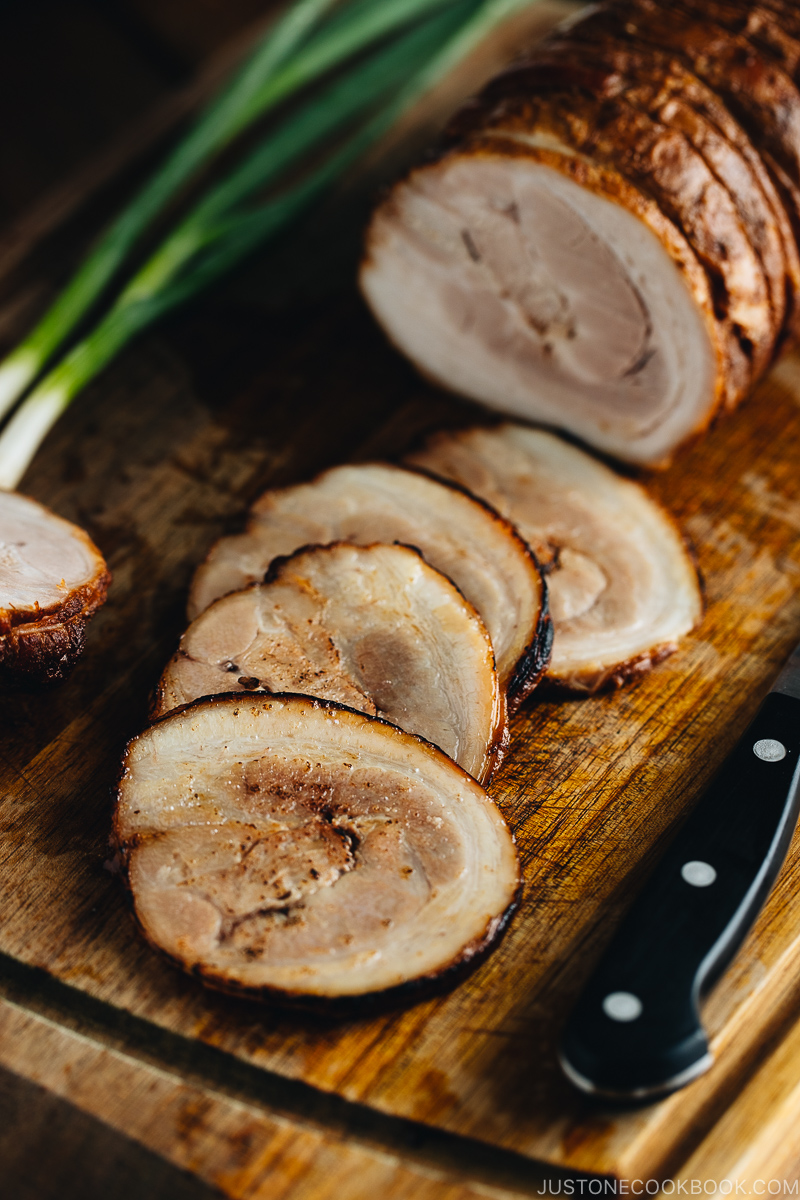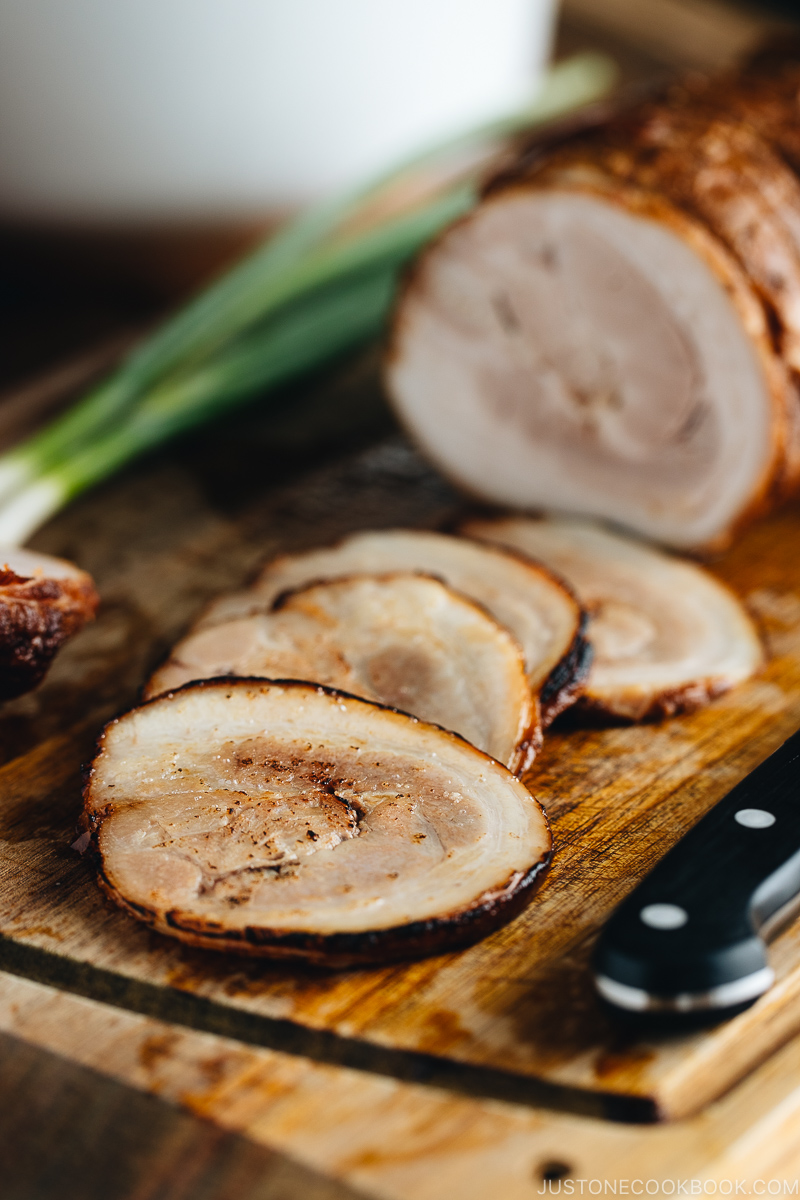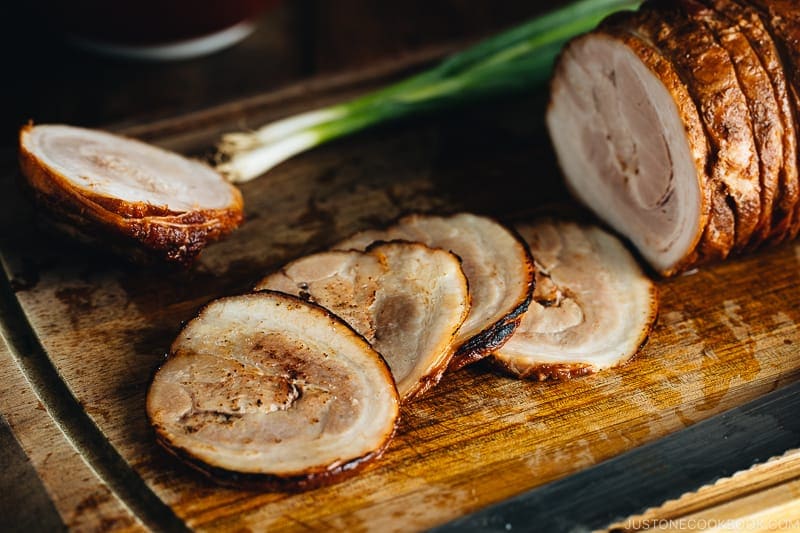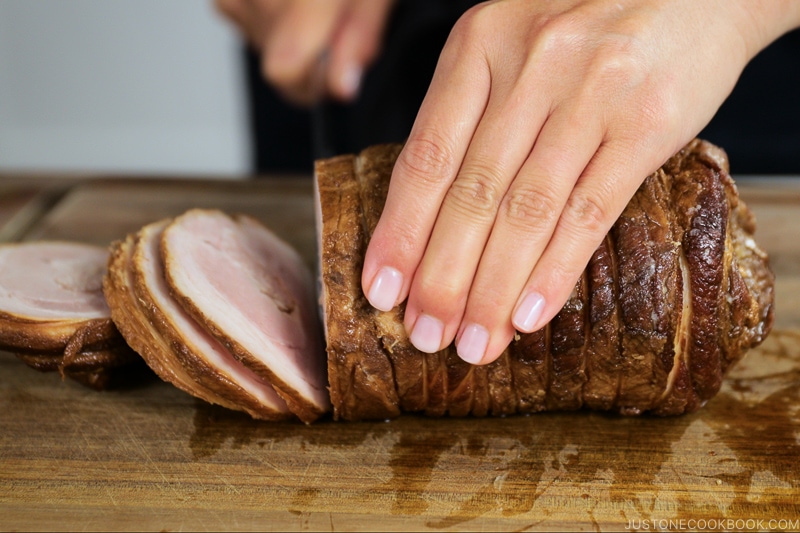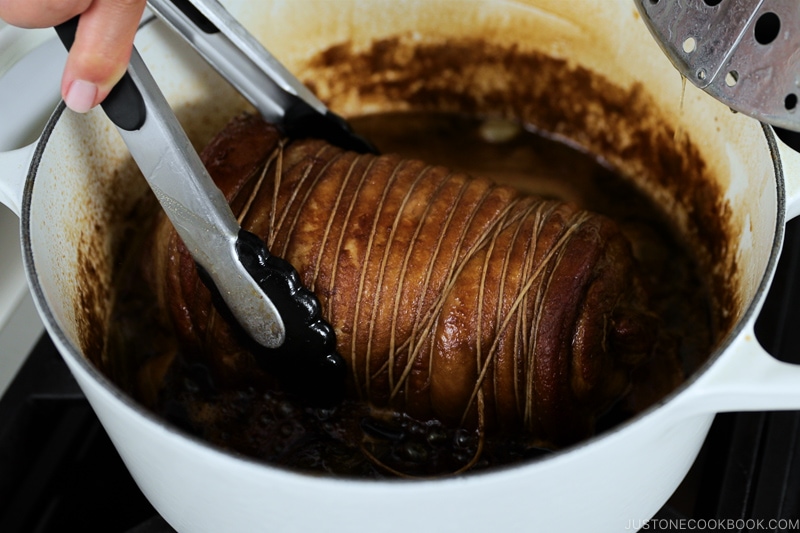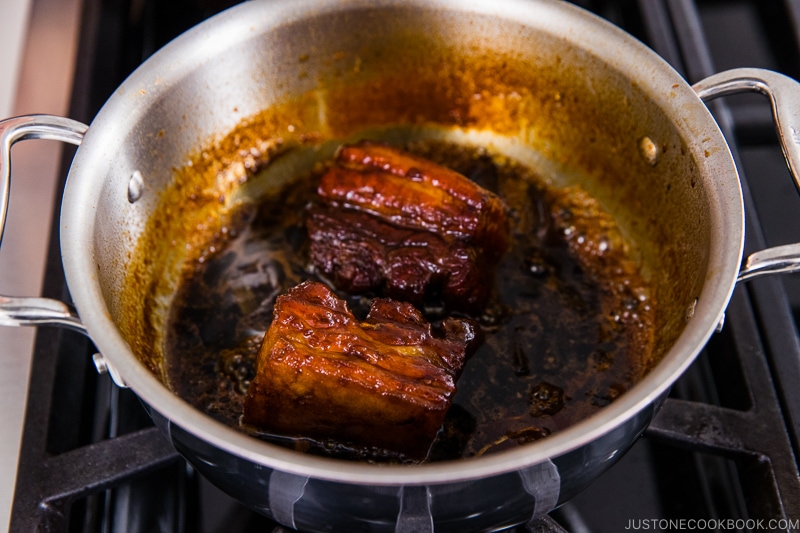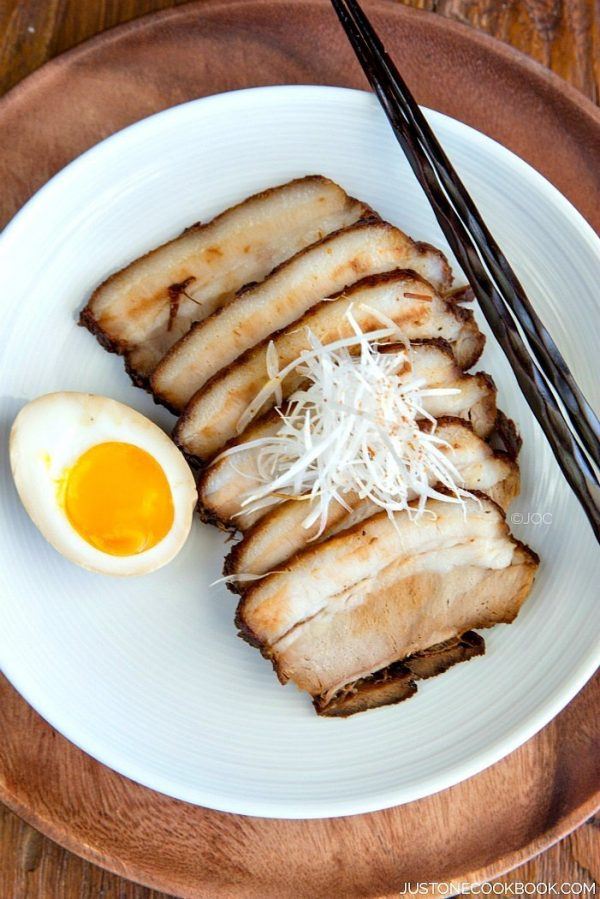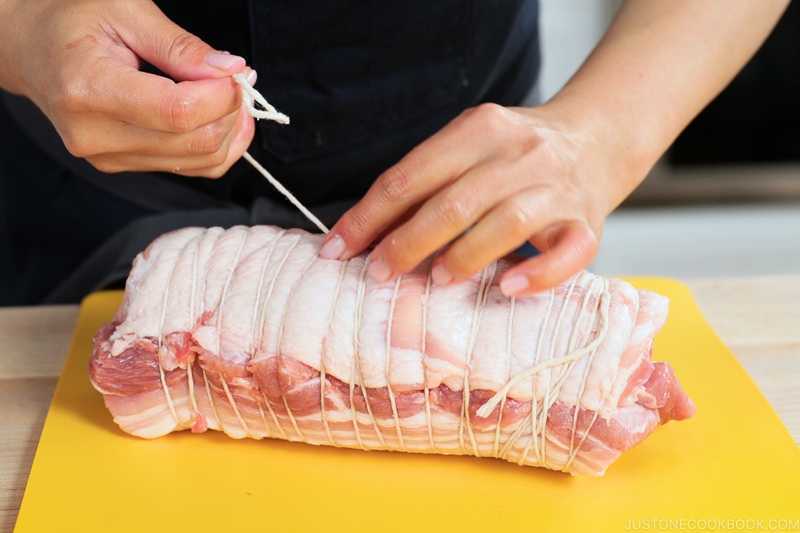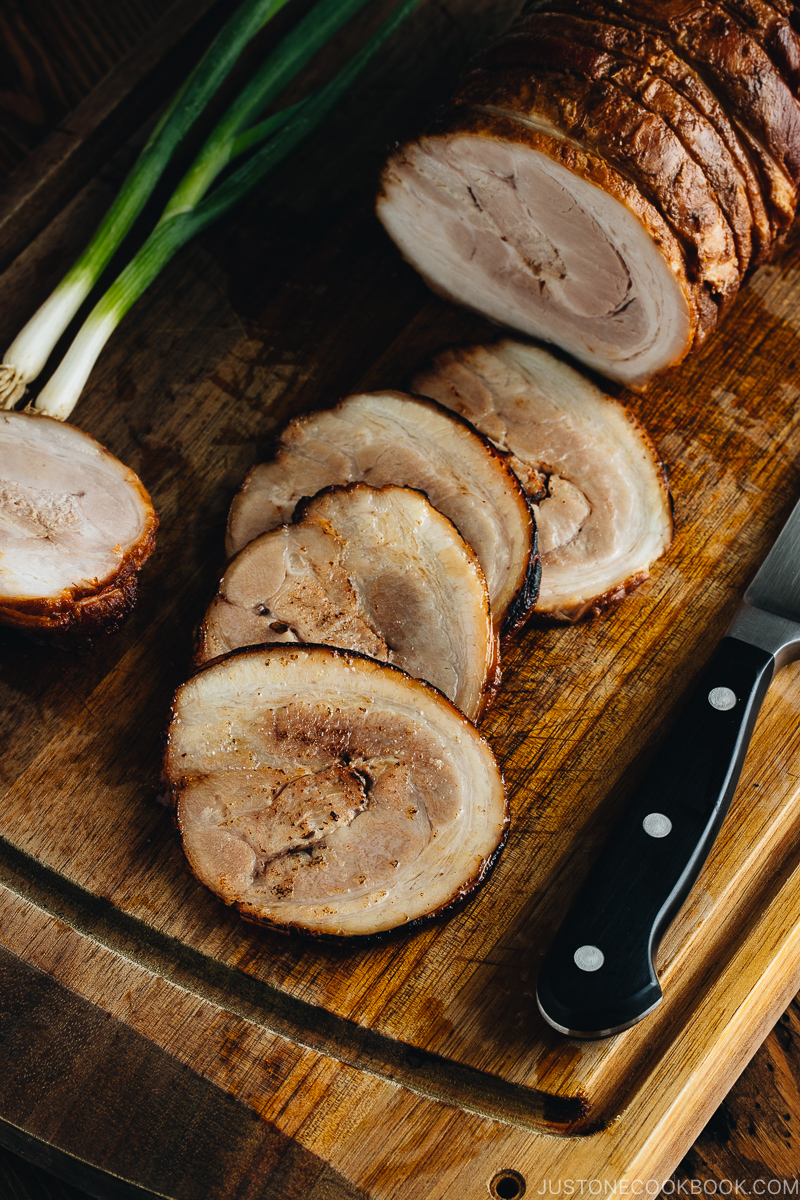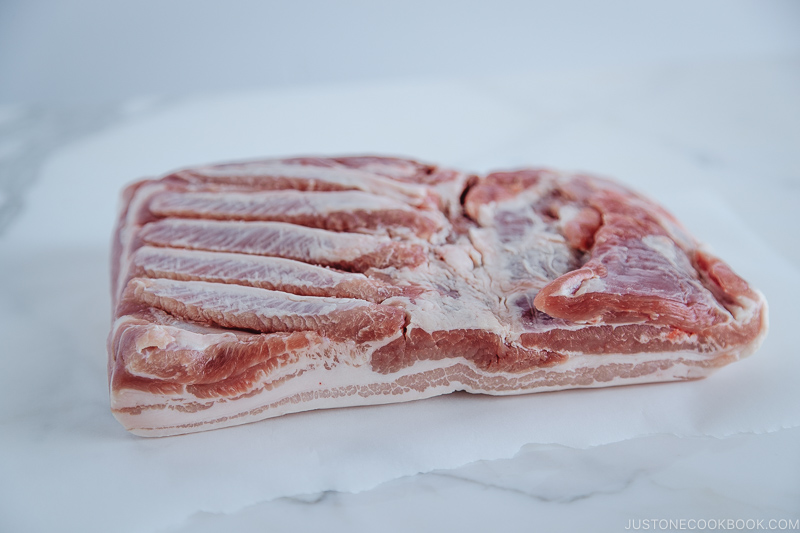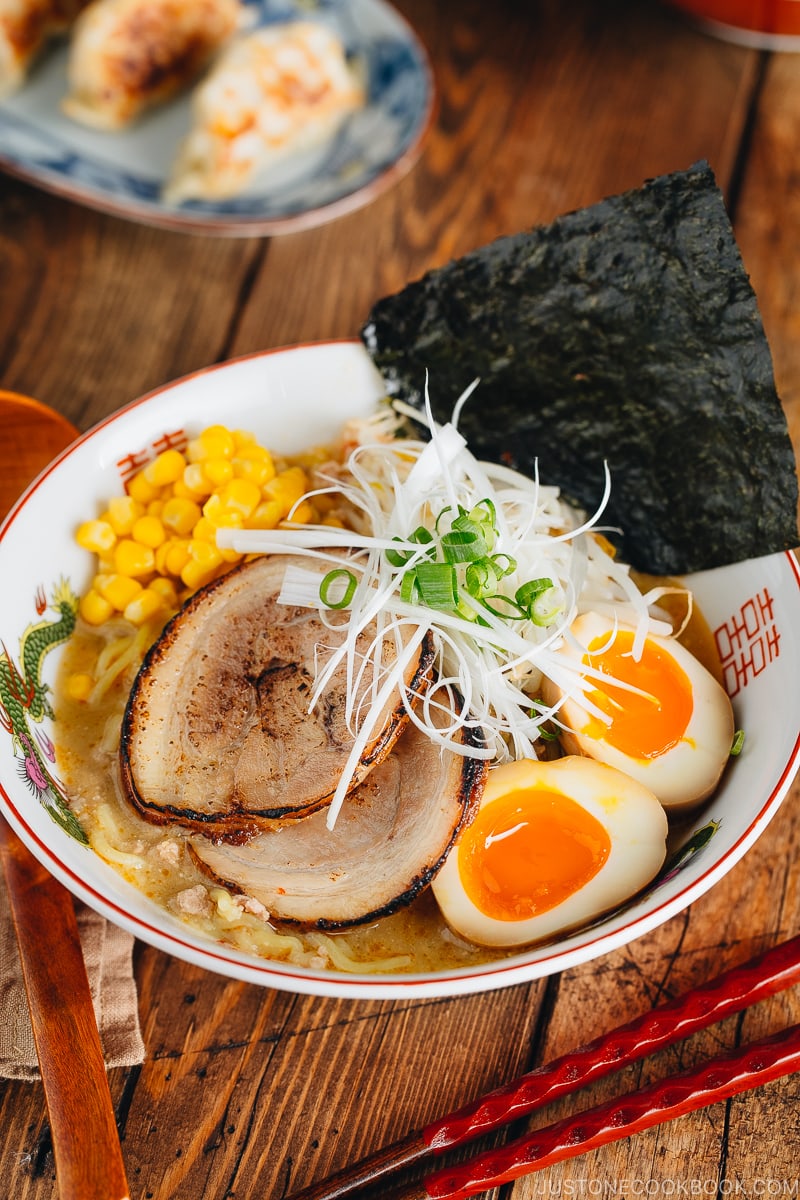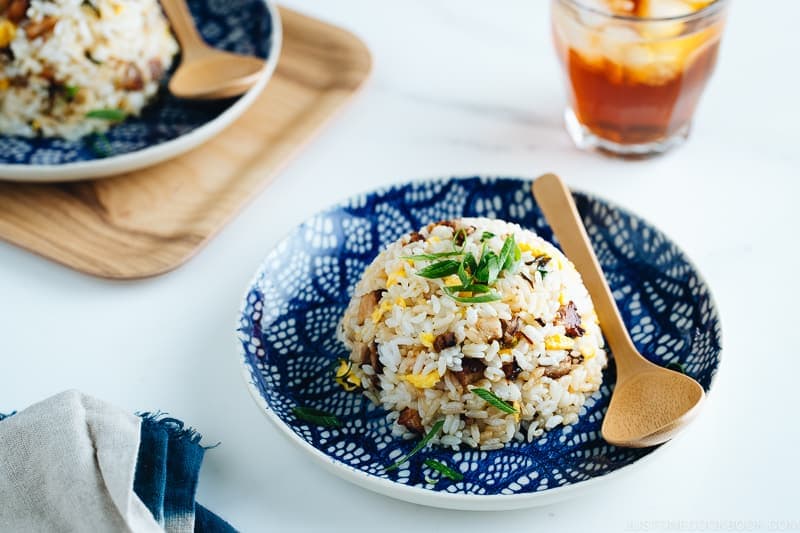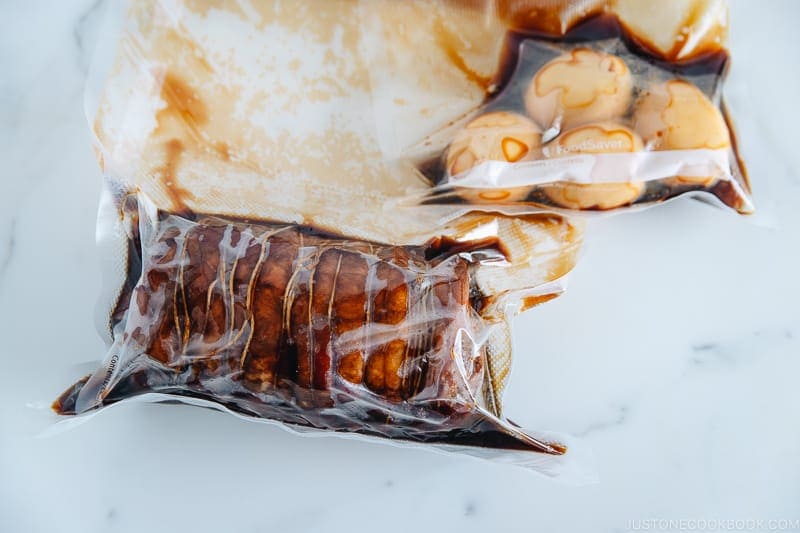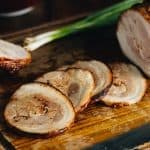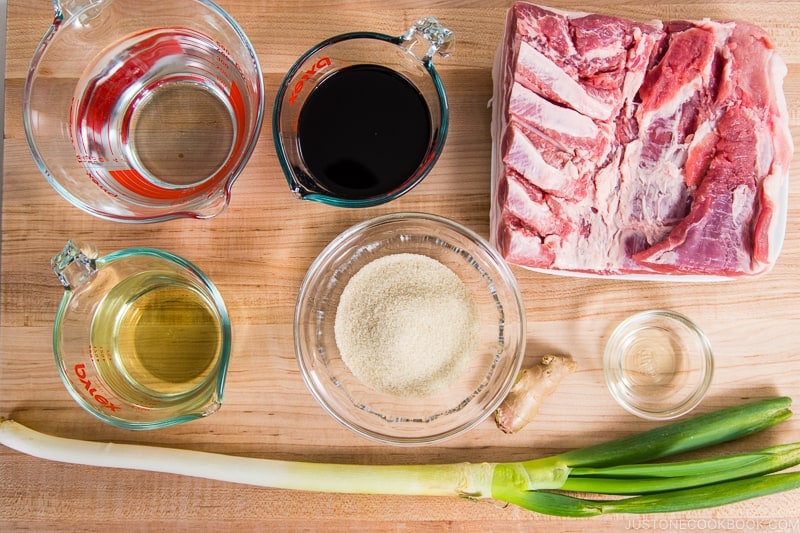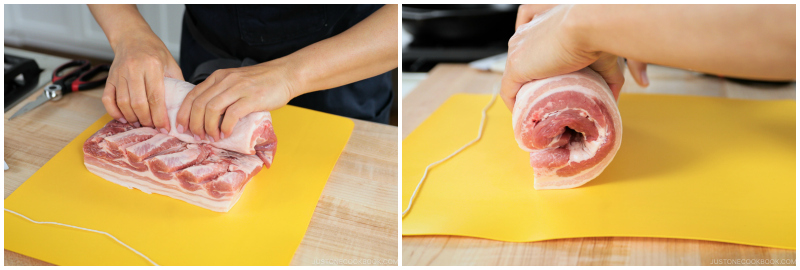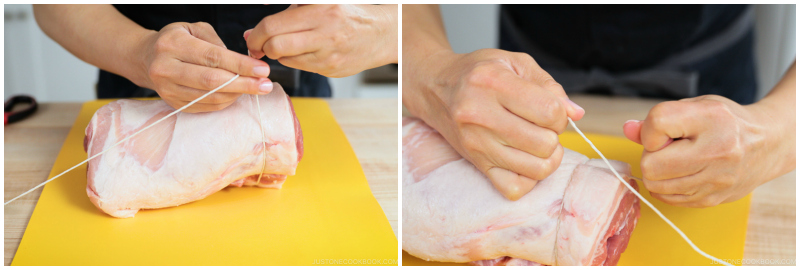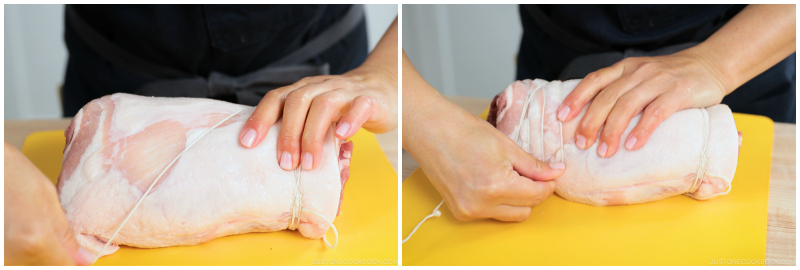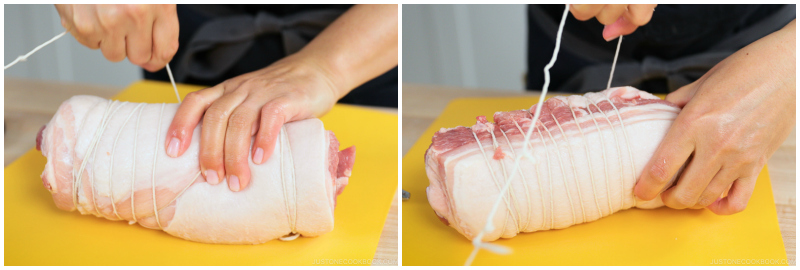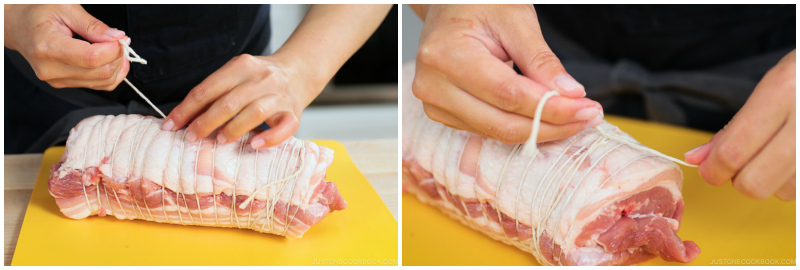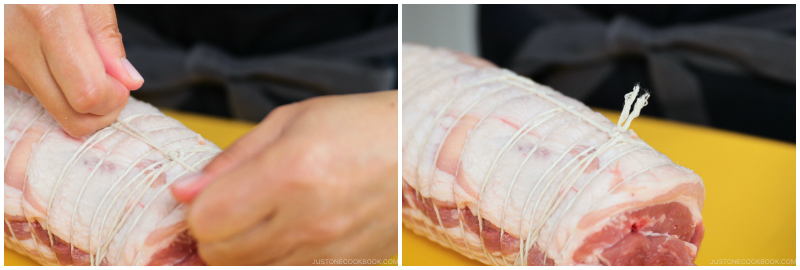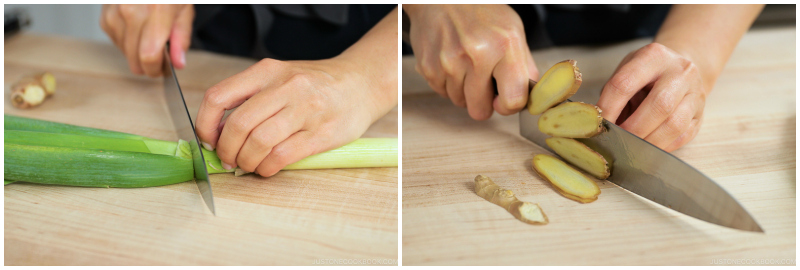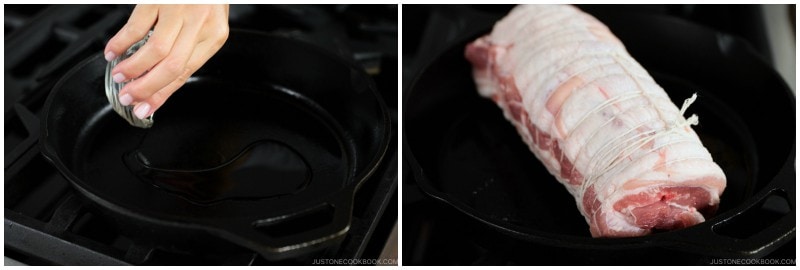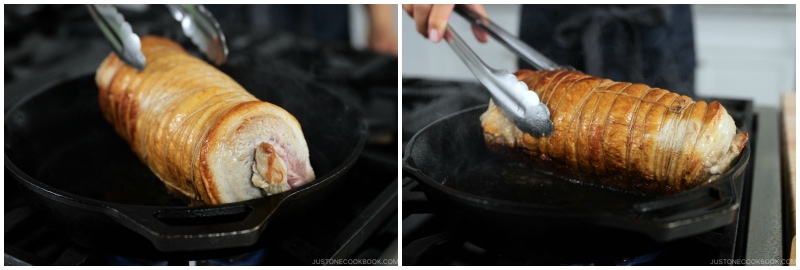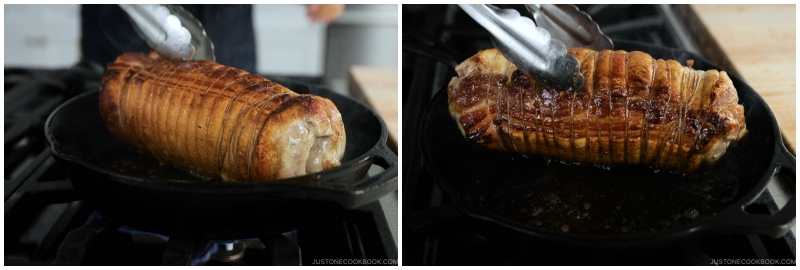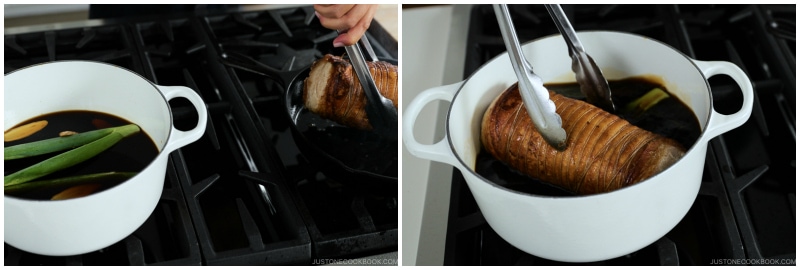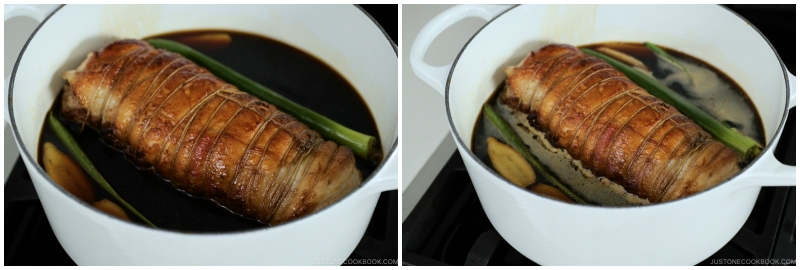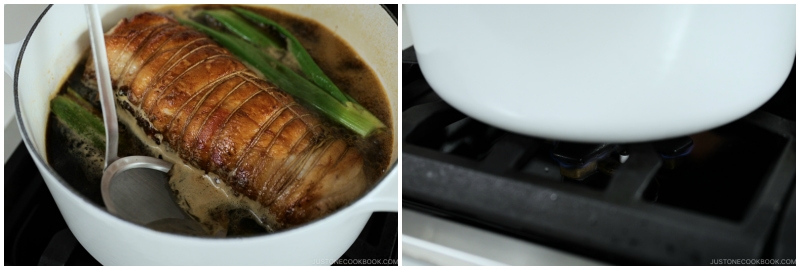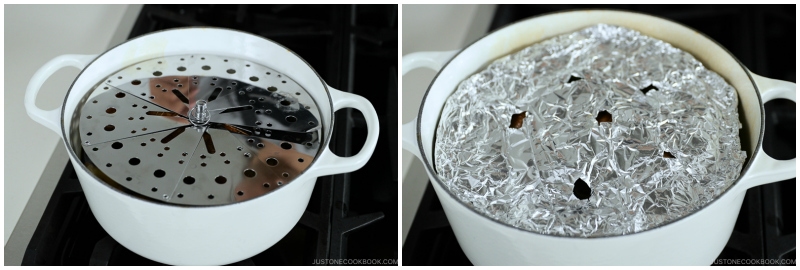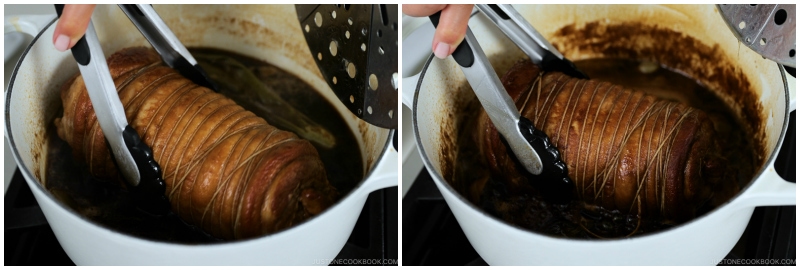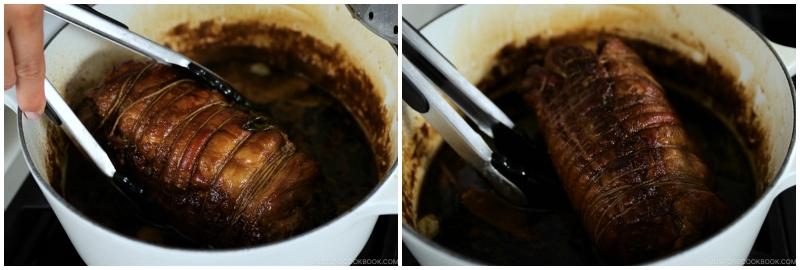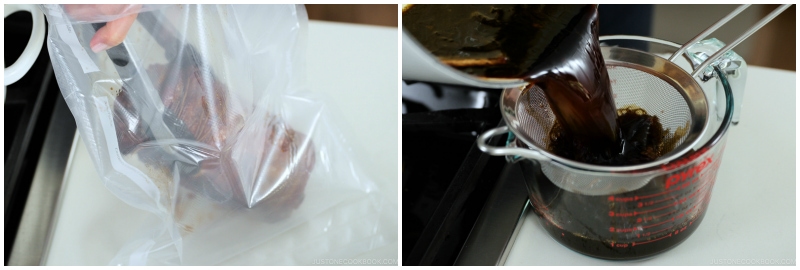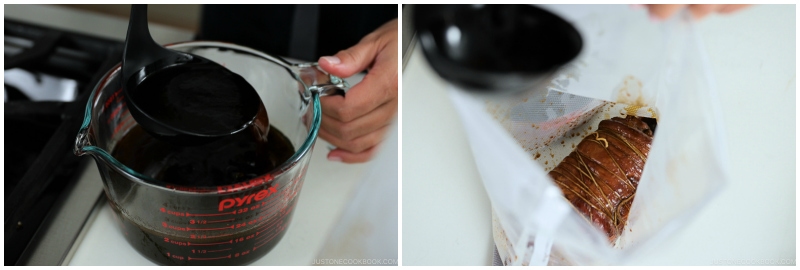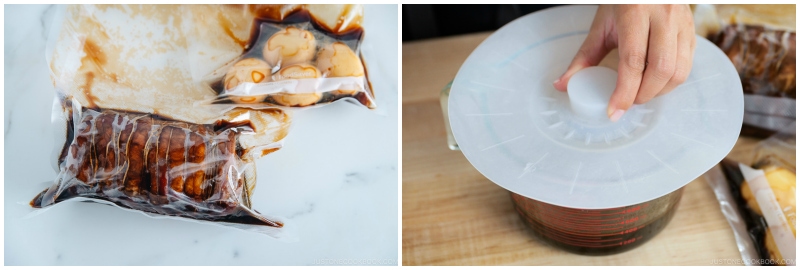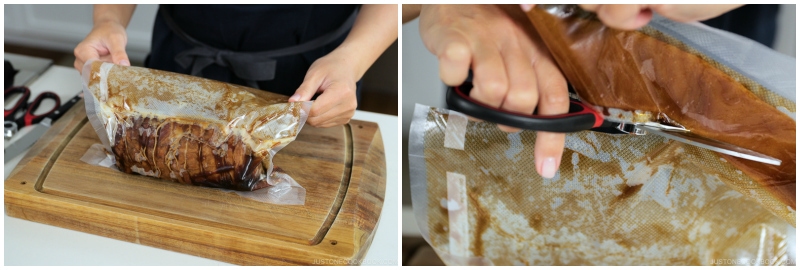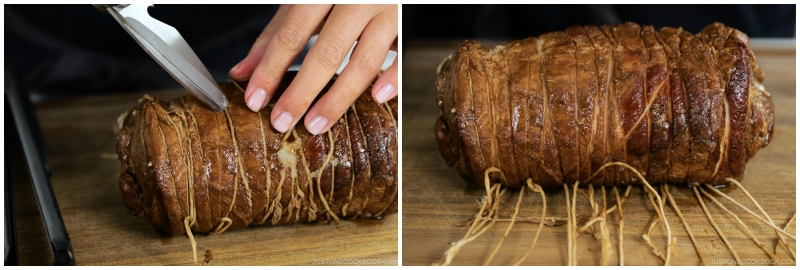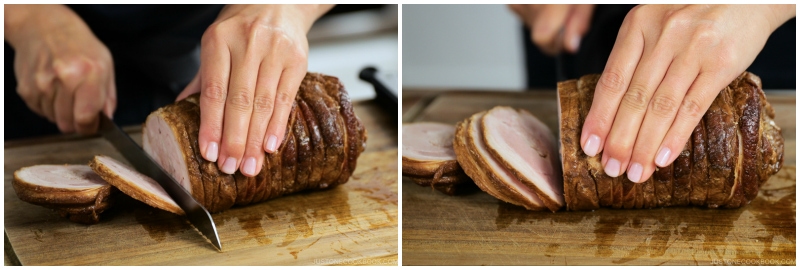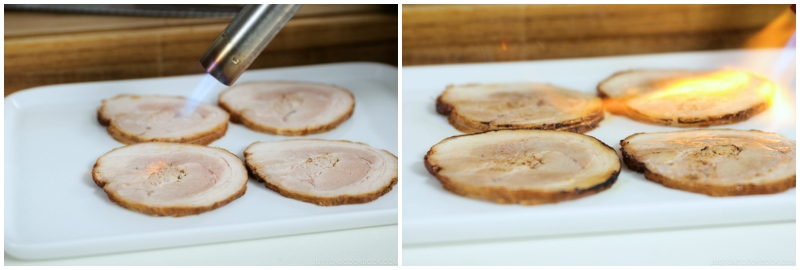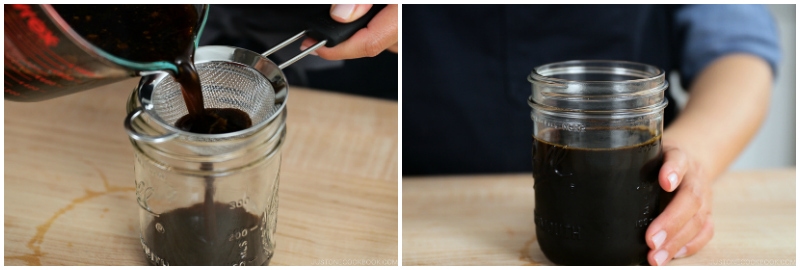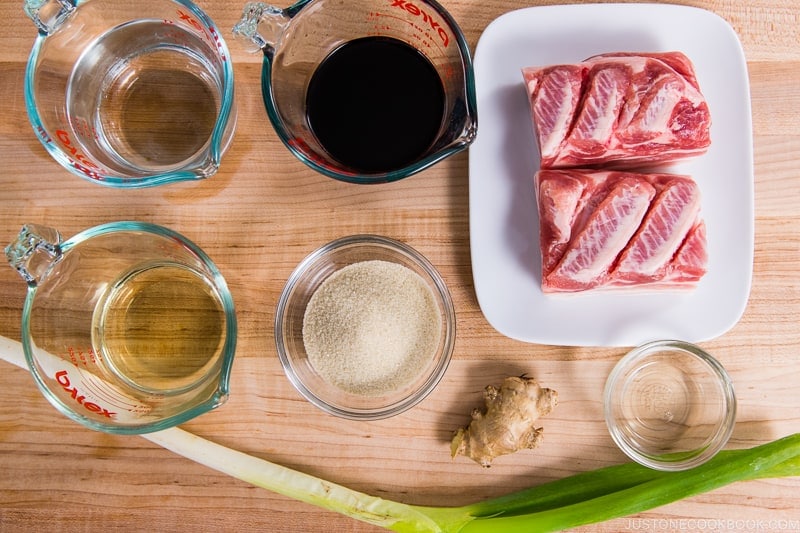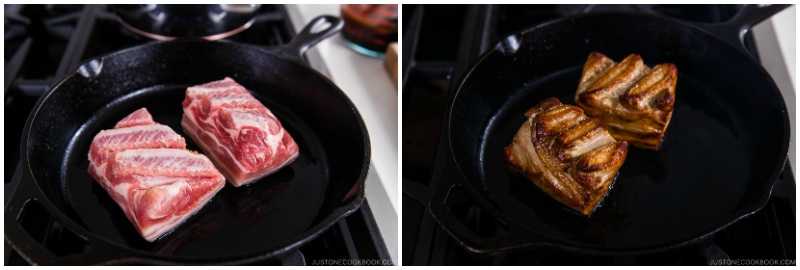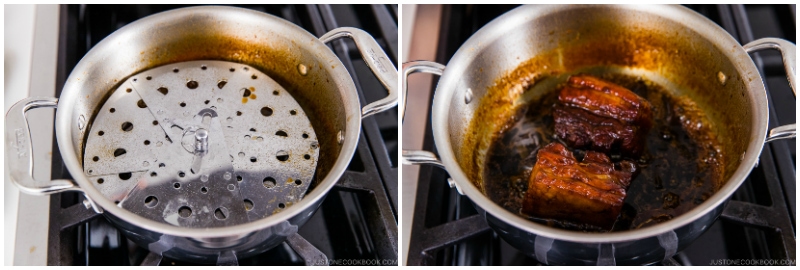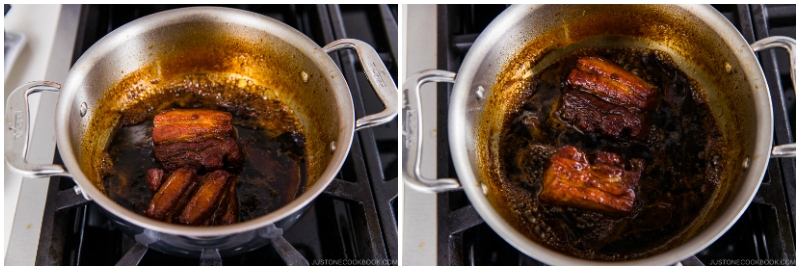What is your favorite ramen topping? For most people, including Mr. JOC, it is the melt-in-your-mouth, juicy, and flavorful slices of braised pork belly called chashu (チャーシュー). These tender slices go so well with perfectly soft-boiled and marinated ramen egg (ajitsuke tamago), which is my favorite ramen topping! It’s surprisingly easy to make my Chashu recipe at home. The prep time and active cooking time aren’t too long, but you do need patience to wait out the overnight resting period. The reward is a super tender chashu that tastes heavenly! I’ll guide you through the process with my step-by-step instructions.
What is Chashu?
Chāshū (チャーシュー) is a Japanese adaptation of the famous Chinese barbecued pork dish called char siu (叉燒). We prepare the pork belly for chashu by rolling it into a log (or make the non-rolled version and skip rolling). Then, we braise it over low heat in a sauce seasoned with soy sauce, sake, and sugar. In Japanese, we sometimes call chashu nibuta (煮豚), literally simmered/braised pork, as opposed to yakibuta (焼豚), which means barbecued pork. The Japanese enjoy chashu as a topping for ramen and other noodles, but also over steamed rice in a rice bowl dish called chashu don.
Chinese Char Siu vs. Japanese Chashu
You have probably seen the slabs of barbecued pork hanging in Chinese deli shop windows. Compare this dish with chashu and you’ll notice significant differences in their seasoning, cooking method, and final texture.
Seasoning: While chashu uses Japanese pantry seasonings, Chinese char siu is marinated in soy sauce, honey, hoisin sauce, rice wine, five-spice powder, and red food coloring. Cooking method: Unlike chashu that’s braised low and slow, char siu is roasted in a covered oven or barbecued over a fire. Texture: Char siu offers a firm bite with marked, smoky grilled flavor. In contrast, Japanese chashu has a succulent and fork-tender texture.
Ingredients for Chashu
pork belly block – for skin-on pork, you’ll need to remove the rind Tokyo negi (naga negi; long green onion) – the green part only; substitute with leek or green onions fresh ginger slices neutral oil – for searing sake soy sauce water sugar
How To Make Chashu Pork
How To Slice Chashu
It’s pretty easy to cut the chashu into thin slices once it has a chance to rest and chill in the refrigerator overnight. A sharp bread knife makes the task easier, too. I don’t usually use up the entire chashu in one meal. I usually cut it into several thin slices for ramen, and then cut the rest into 2 to 3 blocks and pack each piece in a Food Savor bag to store in the freezer. I’ll show you in a later section the various ways to enjoy chashu.
How To Reheat Chashu
There are 3 ways to reheat chashu:
Soak the chashu slices in hot cooking sauce. Directly add it to your bowl of ramen or hot noodle soup. Sear using a culinary butane torch. We call this aburi chashu (炙りチャーシュー), as aburi means searing in Japanese.
I use the searing option to reheat and add smoky charred flavor. Don’t forget to drizzle some hot cooking liquid on top!
3 Tips for the Best Chashu
Sear the meat well. This step makes a great difference, enhancing the finished dish with complex layers of flavor. My go-to choice for searing meats is a solid cast iron pan. You can really turn up the heat with cast iron and the food comes in direct contact with an evenly heated surface. Don’t skip the ginger and long green onion. These ingredients help remove any unsavory odor and add more depth to the sauce. Rest the pork overnight. After slow cooking in the pot, the pork belly marinates for 8 hours in the fridge to soak up all the flavor of the braising liquid. Along with the slow cooking, this overnight resting period is crucial to help intensify the chashu’s flavor.
Chashu Rolled (Log) vs. Non-Rolled (Block)
Chashu served on ramen is often the rolled type, although many ramen shops in Japan do serve slices of the non-rolled chashu. Both ways are legitimate chashu by the standard of ramen shops. Let’s take a look at the two options.
Rolled Chashu (Log)
For serving on ramen, the most common preparation for chashu is rolling a big slab of pork belly into a log with butcher’s twine. Here’s why we roll chashu:
to maintain its shape after rendering the fat to keep the pork moist – since the meat inside is not directly exposed to the sauce, it absorbs the flavor without drying out. to look attractive
For this method, I increase the cooking time compared to the non-rolled type since we need more time to rotate the chashu and soak up all the good flavor. You may wonder why I don’t increase the seasoning to completely submerge the chashu in liquid. This is how ramen shops cook chashu everyday, combining yesterday’s cooking sauce with a new batch of seasoning. However, to a home cook, it is rather wasteful to make such a big batch of cooking sauce. That’s why my recipe requires 2 hours to cook rolled chashu as opposed to 1 hour for the non-rolled type.
Non-Rolled Chashu (Block)
If you want to make less chashu, consider making non-rolled chashu with smaller blocks of pork belly:
good choice for a smaller portion – The pork belly blocks I buy from the local Japanese supermarket come in pieces about ¾–1 lb. start searing right away – you can skip the rolling and tying step! shorter braising time – just 1 hour! The slab is fairly flat and easily absorbs flavor. Make sure to use an otoshibuta (drop lid) so that the sauce circulates nicely and won‘t evaporate too much.
Chashu (non-rolled chashu) served with shiraga negi topping and ramen egg.
How To Roll and Tie Pork Belly
You can find the step-by-step pictures in the recipe and video, but here’s a quick summary:
The Best Cut of Pork for Chashu
The ideal cut for chashu is pork belly, although you can use pork shoulder, and sometimes pork loin. Keep in mind that the last two choices don’t get the melt-in-your-mouth texture as they do not have as much fat as pork belly. In Japanese cooking, we usually use pork belly without a rind/skin (except for making certain Chinese or Okinawan recipes). I always use pork belly for my Chashu recipe, but if you try pork shoulder, let me know. I personally would not recommend using pork loin for this recipe.
Where To Buy Pork Belly
You may not find pork belly sitting at the butcher window or sold pre-packaged, but most butchers should have them stored in the freezer. So don’t be shy to ask the butcher at your local grocery stores or meat deli. Ready to make pork belly on the same day? Do call ahead and factor in the defrosting time as they usually come frozen. The best place to shop for pork belly is Korean grocery stores. They sell different thicknesses and sizes of pork belly. I usually request the butcher to cut a specific size just for me. You can also ask the butcher to remove the rind/skin (if there is any) or remove it yourself using a sharp knife. Miso Ramen
How To Enjoy Chashu
Besides enjoying chashu with ramen or as a main dish, you can also use it for many other dishes. Here are my suggestions:
Noodle dishes – Hiyashi Chuka and Tsukemen Rice dishes – Chashu Don (over rice) and Chashu Fried Rice, a great way to use up the broken pieces or edges of Chashu. Sandwiches and buns – Serve in steamed pork buns called Nikuman
How To Use Leftover Chashu Sauce
stir-fry seasoning marinade for grilling meat marinade for Ramen Egg (ajitsuke tamago)
A Long-time Family Favorite Recipe
I’ve been cooking this exact chashu recipe for almost 20 years (it’s been on the blog since 2011). My family loves it. It’s not that difficult to make at all, but you may need to be around in the kitchen while simmering the meat. The final reward is phenomenal and it’s totally worth your time! Wish to learn more about Japanese cooking? Sign up for our free newsletter to receive cooking tips & recipe updates! And stay in touch with me on Facebook, Pinterest, YouTube, and Instagram. Editor’s Notes: This post was originally shared in May 2011. The first video was added in September 2014 with new images. New video and images are added in May 2019.
